
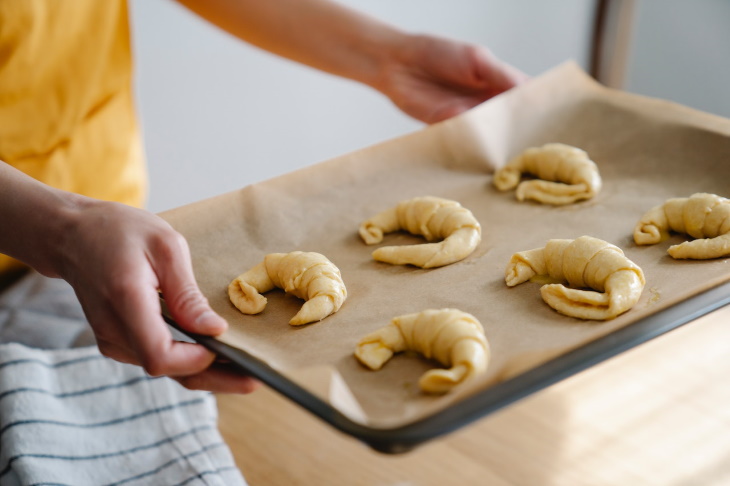
Parchment paper has several features that make it almost indispensable in every kitchen. It’s affordable, nonstick, moisture-resistant, and heatproof. It can be used in the oven and the microwave. These important qualities make it a great tool in the kitchen:
1. You can line sheets and pans with parchment. This is by far the most common use of baking paper, as it eliminates the need to grease pans. Your cake will easily pop out of the pan, and your cookies will readily slide off the cookie sheet when you use parchment. It also works for roasting vegetables and fish, as it will prevent foods from sticking.
2. Layer between sticky foods. Trying to make homemade candy or chocolate? When the time comes to store them, spread a layer of parchment at the bottom of your container and lay down a sheet between each layer to prevent the sweets from sticking together.
3. Protect a work surface. Secure a few sheets of parchment on a work surface to speed up the clean-up. Since it’s nonstick and moisture-repellent, it will protect your counter or table from the mess; all you have to do is roll it up and discard the paper. This trick is especially helpful for family cooking projects or during holiday preparations.
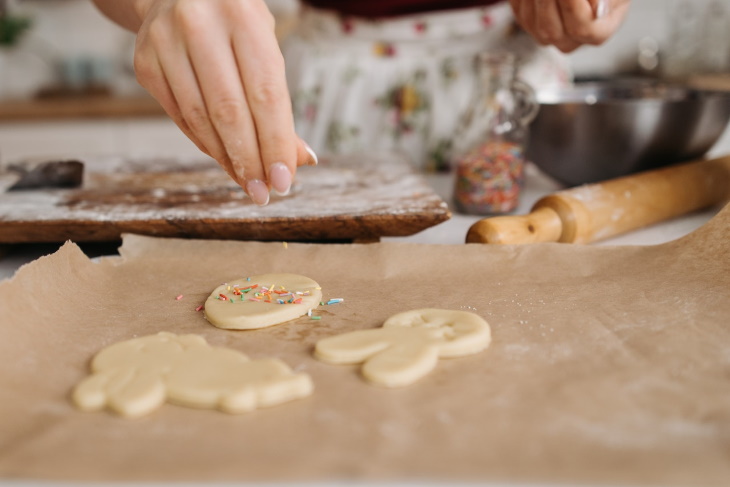
4. Transfer ingredients without any waste or mess. Cut a small rectangle of parchment paper and fold it into a funnel (you can tape the top to secure it). You can use this to refill spice containers and transfer chopped nuts or grated cheese. And best of all, no cleaning is required!
As versatile as parchment paper is, it’s not universal. Parchment paper typically cannot withstand temperatures higher than 420°F (215°C). “Heating it over that temperature can risk it catching on fire,” said Christina Musgrave, a recipe developer in a statement to Huffington Post. Check the package to make sure that the parchment paper you’re using is safe to use in the oven at a certain temperature.
Aluminum foil or a silicone baking mat can be used for baking in the oven. Unless you’re using nonstick foil, however, you’ll probably need to grease the foil well to prevent food from sticking. Wax paper is a good replacement for protecting work surfaces.
Related article: 10 Tips for Working in the Kitchen Just Like a Pro
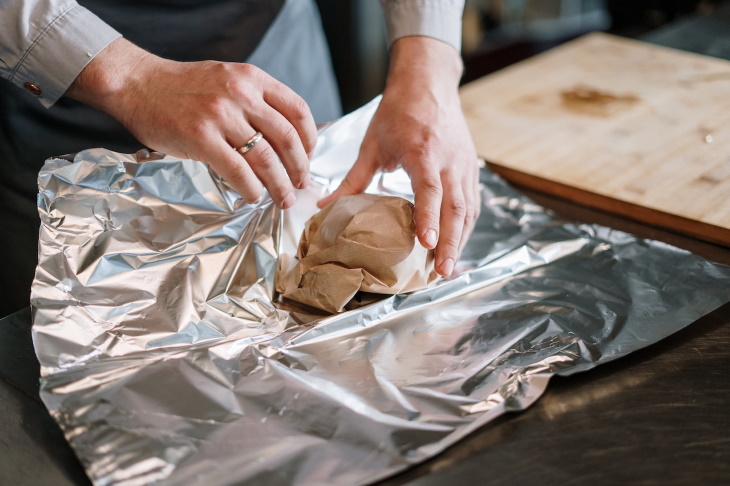
However, there’s also nonstick foil with a nonstick matte side. If you’re using that right now, it’s better to place foods on the matte side.
1. Cooking at high temperatures. Aluminum foil is perfect for grilling and broiling. Whenever you need to cook something on high heat, it’s safer to use foil rather than parchment paper.
2. Prevents burning. “Aluminum foil helps with even cooking or baking in the oven, mitigating the burning of food before it has finished cooking,” says chef Laura Ritterman. So when you don’t want the pie crust to burn on the edge, for example, covering the edges of the pie with a ring of aluminum foil comes super handy. The same trick also works for casseroles and roast turkey.
3. Keep delicate foods tender. Wrapping a potato in aluminum foil and throwing it into a coal fire is an eternal camping tradition. This example goes to show that wrapping food in foil helps retain its juices while cooking. Hence, you can also wrap other delicate vegetables or even fish in foil to prevent them from drying out in the oven or on the grill.
We know that you know, but it has to be said - you should never put aluminum foil in the microwave. Or else, sparks and possibly a fire are unavoidable. It’s also not the best idea to use aluminum foil for freezing or packaging foods. It can be punctured easily, and you’ll have a mess on your hands.
It all depends on the use. Parchment paper can work for oven cooking, but it won’t work for high-heat cooking. For the latter, only something like grilling paper or barbecue bags will do.
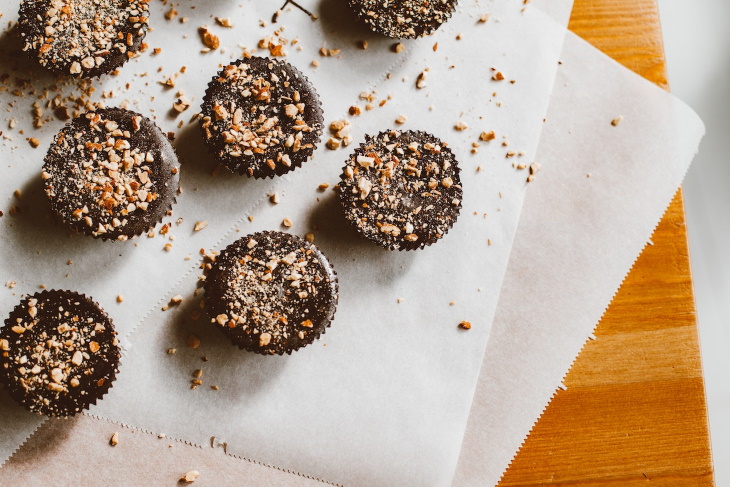
Like parchment paper, the wax paper also comes in a roll and looks very similar, but it does not perform identically at all. That’s because the wax paper is coated with paraffin wax - an ingredient that cannot withstand heat and will melt or burn in the oven.
Wax paper is cheaper than parchment paper, which makes it a superior alternative for many room-temperature tasks. Wax paper is more shapeable than baking paper, so you can easily use it to wrap, transport, and refrigerate things like sandwiches, cookies, or cheese. You can also use it for lining work surfaces and layering. For example, we prefer wax paper for candy apples, chocolate-covered bananas, and most no-bake desserts.
Never use wax paper in the microwave or oven. The wax will melt or may even catch on fire. And the terrible smell of burning wax paper is unforgettable, trust us.
Related article: 10 Neat Kitchen Tricks and Hacks
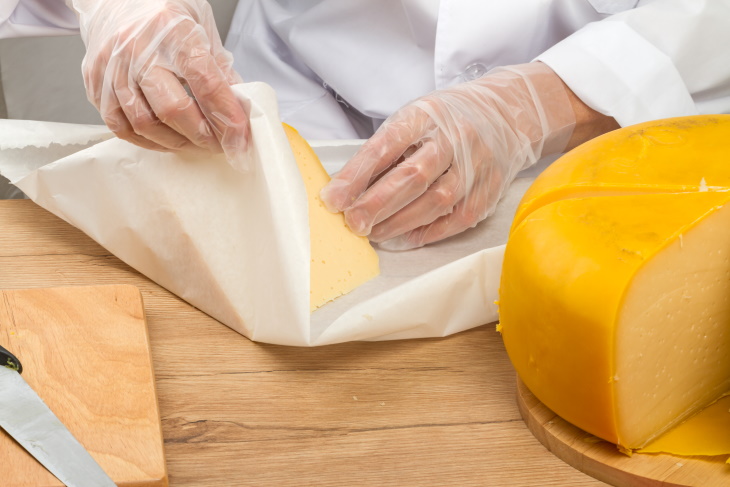
Never heard of this one? We’re sure you’ve seen it many a time, as this is exactly the kind of paper used to wrap meat, fish, and cheese at many grocery stores. It’s also known as butcher paper or cheese paper, and it’s basically a heavy-duty type of paper with a plastic coating on one side.
Fresh meat and seafood are wrapped in this paper before freezing, and it seals in all the juices while also protecting the food from freezer burn. When wrapping food, the plastic coating goes on the inside, and the plain paper side is on the outside, letting you write and label the food.
Use freezer paper to prolong the freshness of the food when frozen, and seal in the flavor. Generally, foods wrapped in freezer paper remain fresh for up to a full year. It’s stronger than foil, and fits snugly against the food, protecting delicate meat or fish from freezer burn. Freezer paper is perfect for long-term storage.
Freezer paper isn’t perfect for loose foods like peas or broccoli, as these would be tough to wrap. It’s also not very beneficial for foods that need to be defrosted fast, as the only way to defrost something wrapped in freezer paper is by transferring it to the fridge overnight.
Needless to say, you should never heat up freezer paper in the oven or microwave. The plastic coating will melt and cling to the food.
You can replace freezer paper with freezer-proof food containers, aluminum foil, or beeswax paper wraps.
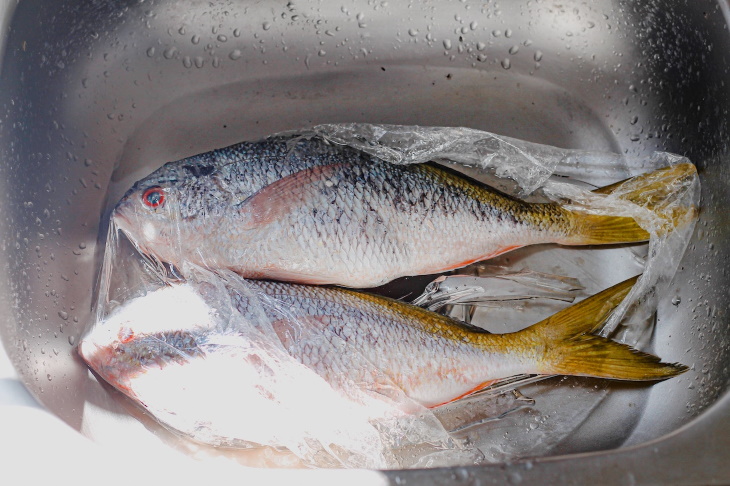
Plastic wrap (also known as cling film, Saran wrap, or food wrap) is cheap and practical, but its negative cannot be ignored. This stuff is considered quite hazardous to your health, especially if heated or when your food contains fats.
Although many plastic wrap manufacturers moved away from using PVC (polyvinylidene chloride), polyvinylidene chloride (PVDC), and Plasticizers (all of which leach carcinogens and heavy metals like lead and cadmium into foods), microplastic particles in newer cling films may still be capable of polluting your food. There’s also no guarantee that the plastic wrap in your pantry is not made of PVC or any other harmful chemical (and we won’t even get into the environmental problems with plastic wrap).
Manufacturers and experts now recommend “keeping the wrap at least 1 inch from food surfaces will eliminate any potential risk,” but we all know that doing that with most foods would be tough or impossible. So instead of explaining to you how to use plastic wrap carefully, we’re here to offer other solutions.
1. When preparing puddings or custards, use parchment paper instead of cling film to prevent a tough film from forming on the surface.
2. Use glass or stainless-steel containers to store food.
3. To cover open jars and such, you can use silicone covers, a plate, or parchment paper, and a piece of string or a rubber band.
Beeswax food wraps are a great replacement for wrapping foods and even freezing them. Read on to learn what these are and how to use them.
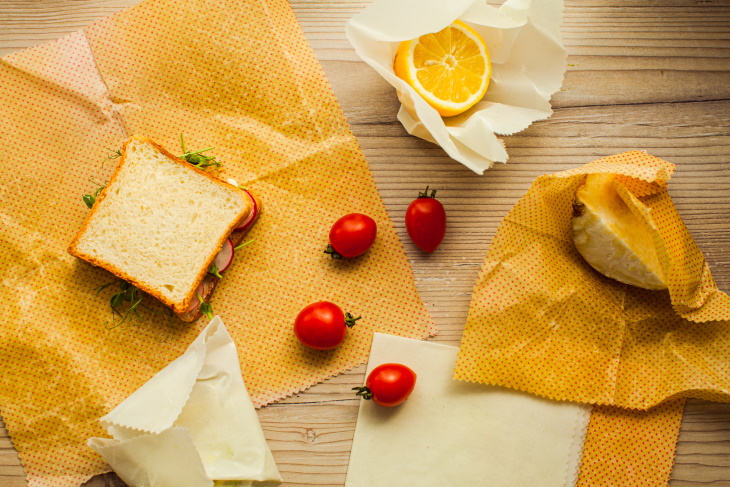
Beeswax food wraps are a reusable alternative to cling film. These are pieces of cotton fabric coated in a waterproof, airtight layer of beeswax. These come pre-cut or in a roll, and you can easily cut them to the size you need.
Just use these wraps as you would a piece of parchment, cling film, or aluminum foil, wrapping it tightly around the food. The beeswax coating makes the fabric clingy and malleable, and the heat of your hands will help it cling to the container even better. These can be used to cover, wrap, and transport countless foods.
Foods wrapped in beeswax wraps can also be shaped into packets and frozen with results comparable to that of freezer paper.
And when you're done with the food, you can wash the wrap in lukewarm water and soap, hang it to dry, and then reuse it. Just make sure to use cold or lukewarm water and NOT hot water because the beeswax may melt. Similarly, avoid using beeswax in the oven or microwave, since that will melt the wax off of the wrap.